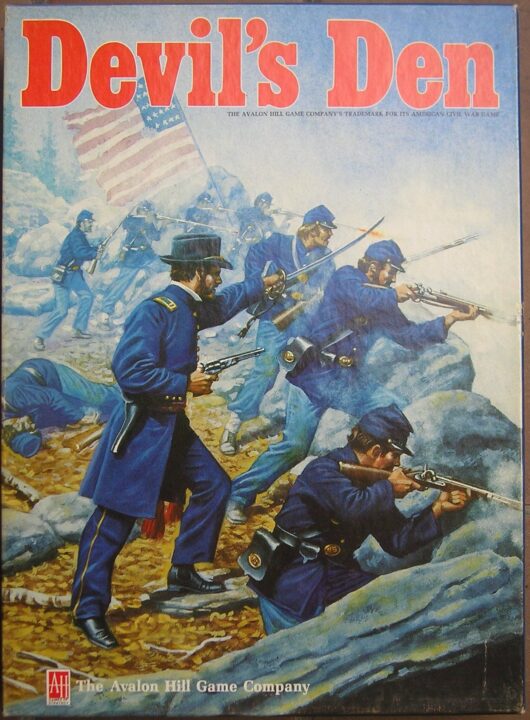If you like your board games with a dash of mischief, a side of strategy, and enough spooky artwork to make your aunt Carol clutch her pearls, then welcome to my review of Devil’s Den. I rounded up my usual gang of troublemakers (aka friends), grabbed snacks that left greasy fingerprints on the cards, and put this haunted hot spot to the test. Was it a fiendish delight or did it trip over its own pitchfork? Keep reading for all the gory details—trust me, you’re going to want to know before you open the gates of this den!
How It Plays
Setting up
Lay out the haunted mansion board and give every player their devilish tokens. Shuffle the event cards. Everyone picks a creepy character—dibs on the skeleton every time!
Gameplay
Players move around the board, collecting cursed artifacts and dodging traps. Each turn, you roll dice and play action cards (I tried to bribe the ghost, but it turns out he only likes cheese). Event cards keep things fresh and sometimes ruin your carefully laid plans, much like my toddler.
Winning the Game
First player to escape the mansion with three artifacts wins. The trick? Don’t let anyone steal yours. It gets wild near the end—last time I got swindled by my own brother. If you like laughs, drama, and betrayal, you’re in the right haunted house.
Want to know more? Read our extensive strategy guide for Devil’s Den.
Game Balance and Player Fairness in Devil’s Den
So, let’s talk about the two things that can make or break any board game night: game balance and player fairness. If you have ever flipped the table in a fit of rage, you know what I mean. No one wants to sit through two hours just to get steamrolled by a runaway leader or, worse, an unfair mechanic. The good news? Devil’s Den mostly ticks the right boxes here. When me and my friends cracked open the box, we were all at the same starting point. No sneaky advantages, no hidden bonuses. That’s a big thumbs up from me. The factions, if you can call them that, are evenly matched right out of the gate.
Of course, no game is perfect. We did notice that if you mess up in the first couple of rounds, you might spend the rest of the game stuck behind. That’s not my favourite thing. I want a fighting chance for a comeback, even if I took a gamble early on and lost. The mechanics in Devil’s Den do try to balance things with some catch-up features, but they aren’t always quite enough. If you get cornered, you might as well start plotting your snack break instead of a glorious return!
Still, with the right group, the fairness factor is solid. It feels like skill matters, and that’s what keeps it fun. Up next, I’ll spill the beans on whether luck or strategy runs the show in Devil’s Den—spoiler, one of them tried to flip the board!
Strategy Versus Luck: Who Wins in Devil’s Den?
Every time I crack open Devil’s Den, the question pops up: do I need a PhD in strategy, or should I just kiss my dice for luck? Well, after several rounds, many lost snacks, and a couple of heated arguments with my friend Steve (who swears the dice are rigged), I’ve got some thoughts.
Devil’s Den gives you plenty of room to plan. You need to think a few turns ahead, watch your opponents’ moves, and not just charge into the game’s den like a wild goat. I found myself staring at the board a lot, plotting sneak attacks or clever defenses. You can win by being sneaky. My friend Jenny tried to win by just following her gut feeling and, let me tell you, she spent more time in the “Devil’s Dungeon” than on the board!
BUT—there is luck in the mix. Dice rolls, card draws, and random event tokens keep things spicy. There were times I had everything lined up for victory, only for one bad roll to hand Steve the win. If you like a game that rewards smart play but still gives underdogs a chance, Devil’s Den sits in that sweet spot. Sometimes, luck messes you up, but most of the time, clever moves lead to winning. I wish luck played an even smaller role, but at least it never feels like pure chaos.
If you want a game where brains beat the randomness (most of the time), you’ll like Devil’s Den. Up next, catch me raving—or ranting—about the game’s theme and artwork quality. Will it wow, or is it just a devil in cheap cardboard?
Devil’s Den: Spooky Theme & Eye-Popping Artwork
If you love spooky vibes, Devil’s Den will delight you before you even roll a die. The theme takes you deep into a haunted cavern full of traps, wily demons, and loot that’s way out of your league. As soon as I opened the box, my buddy Rick said, “Whoa, this looks like Halloween at your Aunt Margie’s house,” and honestly, he was right. Every card oozes with ghoulish charm. The player boards look like ancient spellbooks, and the tokens are tiny red pitchforks. It’s the kind of detail that makes you want to take pictures and spam your game group.
The color palette leans on dark, moody blacks and reds, but not so much that you’re squinting at the board. Most things pop where they should, and I never mixed up a cursed idol for a health potion, which happens more than I’d like to admit in some games. The artwork tells a story on its own—every monster card looks ready to leap off the table and steal your last potato chip. My friend Sam, who never notices art, actually stopped and asked, “Who drew this stuff?!” It’s that striking. Even the box insert is illustrated, so you get a mini fright-fest before you finish unpacking.
For me, Devil’s Den nails its theme and artwork like a demon with a new pitchfork. If you want atmosphere, it delivers in spades, bats, and probably some skeletons too. Up next, I’ll tackle the question: can you actually learn Devil’s Den without consulting a dark wizard, and will you want to play again?
Is Devil’s Den Easy to Learn and Worth Playing Again?
I remember the first time I cracked open Devil’s Den with my usually suspicious group of friends. The rulebook stared at us like it wanted to eat our souls, but after a shaky start and one accidental (possibly haunted) coffee spill, we actually found the basics pretty quick to pick up. The game does a good job of walking new players through their first turns. I wouldn’t say it’s easier than pie, but it’s at least easier than assembling IKEA furniture. If you’ve played some modern board games before, you’ll be off and scheming in no time. If not, just bring patience and maybe a snack to calm your nerves.
Replayability is where Devil’s Den tries to charm you all over again, and honestly, it mostly succeeds. You get multiple routes to victory, special event cards that shake things up, and player powers that make each session feel a bit different. One time my buddy Dan unleashed a combo that made the rest of us swear we’d never trust him in a game again (we probably still will, but with one eye open). That being said, after about five or six games, you may start to feel a bit of déjà vu. The scenarios can blend together unless you have imaginative friends who like to squabble and bluff for fun.
So, do I recommend Devil’s Den? For those who like a mid-weight, slightly spooky strategy game with enough replayability for at least a handful of game nights, absolutely. Just don’t expect endless surprises—and maybe keep your coffee cups far away from the board!
Conclusion
Devil’s Den gave my friends and me a howling good time—especially when someone (usually me) fell into a trap for the third time in a row. The theme oozes spooky charm and the artwork pops right off the table. It’s easy to pick up, so even the scaredy-cats in your group won’t whine about learning rules. Replayability gets a thumbs up too, unless you binge a dozen rounds, then the scenarios might feel a bit samey.
There’s a dash of luck, though, so don’t expect pure strategic bliss. If you want a game that looks great, plays quick, and delivers a lively night, Devil’s Den is solid. Just don’t blame me if your dice betray you harder than my friend Steve at the last minute. That wraps it up—enjoy (and watch your step)!


